Examination Samples
Granite orthoclase hornblende biotite
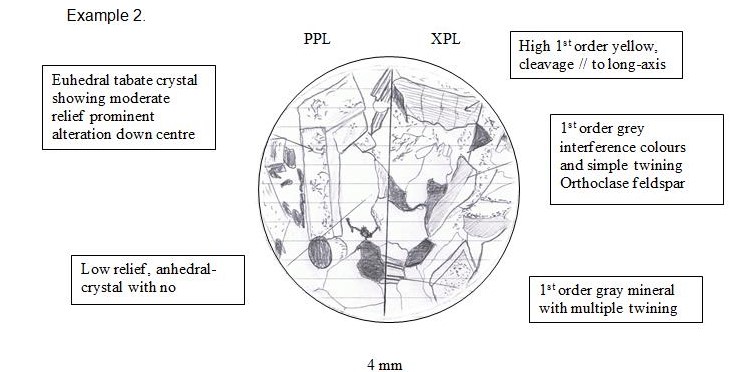
Gabbro
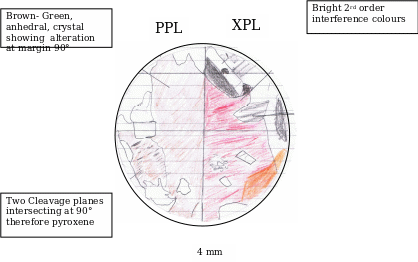
Euhedral to subhedral crystals, showing tabulate habit and 1st order interference colours Multiple twinning evident therefore plagioclase feldspar.
Basalt
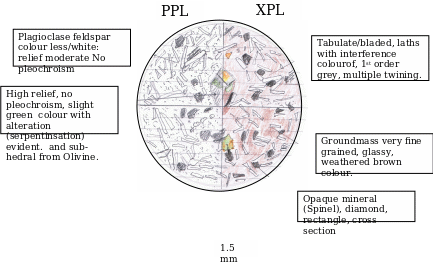
Gabbro
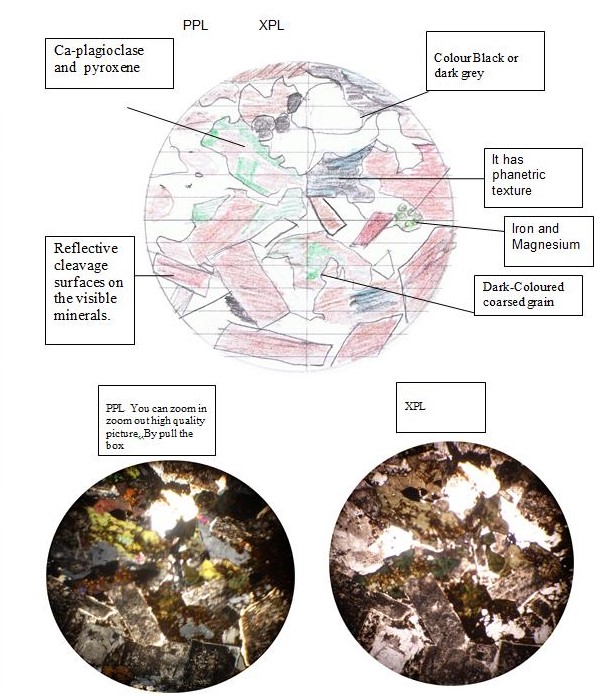
Rocks and Minerals Characteristics
Granite is an intrusive plutonic rock with high silica and low iron content The granite is crystallized in nature.
- Texture of Granite: The granite has coarse-grained and even structure with light colour. The granite is crystal in depth, which may consist of pink, dark grey or light grey. Additionally, there rare varieties classified as crystalline and cryptocrystalline. The Crystalline is characterised as colourless crystallized quartz and the cryptocrystalline quartz structure can only be seen under the microscope.
- Mineral composition: Quartz has common mineral resistant to weathering Its mineral composition consists of Feldspar of about 50%, Quartz ranged from 20% to 40 % and Mica consists of 3-10%.
- Moreover, it has been known that some type of quartz rock contains minerals and gemstones of high value. It has been identified that some quartz type of minerals are found to be transparent or opaque.
- Structure: The granite is note to hard and tough with average density of 2.75 g/cm3. Additionally, the quartz has crystallised structure. Nationmaster (2007)
Gabbro is an igneous rock, which have coarsed-grained texture. It has a dark-colored, coarse-grained intrusive igneous rock. Rock sample is approximately 1-2 inches in length and width. The gabbro has large grain of about 10cm
- Mineral Composition: It is composed mostly of the mineral feldspar with smaller amounts of pyroxene and olivine.
- Structure: The gabbro has shiny look and crystallised in nature.
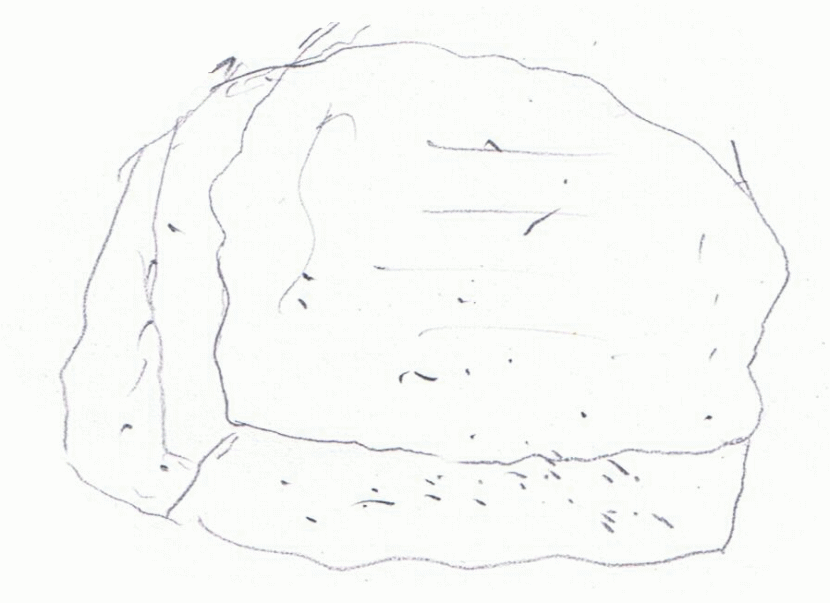
Basalt is classified an intrusive igneous rock that has the dark colour. It is usually available in most part of the earth crust. Basalt rock can also be found in the ocean floor around the world. However, the basalt contains some minerals such as pyroxene and Olivine. The other minerals that can be found in basalt rocks are Feldspar and quartz. The formation of basalt occurs when the molten magma intruded as a volcano on the earth surface.
- Texture: Basalt consists of fine grain igneous rock. It may consists of different colour of brown, reddish, dark grey, black and dark green in colour.
- Mineral Composition: Basalt contains large percentage of iron and magnesium. Additionally, it contains quartz or calcite.
- Structure: The features of the rocks reveals the cleavage surface with phanetric texture. Moreover, the most common basalt rock have some rough surface.
Rocks Examination Examples
Olivine basalt
- Location: lions launch Edinburgh
- Colours: Black and Green
- 80% Black Less then 2 mm grain size
- 20% Green less then 2 mm grain size.
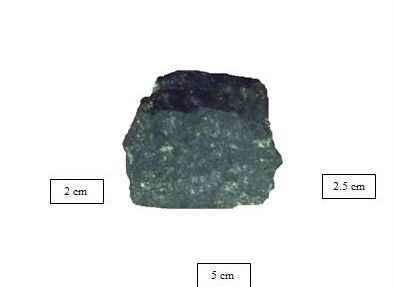
Examination
- The size of the sample rock is approximately 2.5 cm in length, 5cm in width and 2cm in depth.
- The mineral constituent in the sample rock is fresh , glass and shinny
- There are distinct 3 types of materials that makes up the rocks. The mineral materials contain feldspar, iron and magnesium
- The percentage made up of each minerals is approximately 10% of iron, 60% of feldspar and 30% of magnesium.
- There are gaps between the mineral grain.
- The diameter of each minerals is approximately 20mm for feldspar, 10mm for magnesium and 5mm for iron
Dolerite
- Location: Rowley Regis Leics
- Colour: Black, White and little Brown
- 70% Black Less then 2 mm grain size
- 20% White less then 2 mm grain size
- 10% Brown less then 2 mm grain size
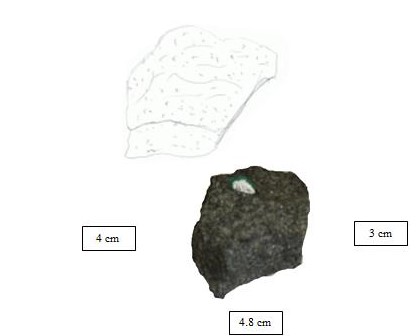
Examination
- The biggest bit is approximately 7mm.
- The smallest bit of the mineral grain is approximately 2mm.
- The morphology of the pink mineral fragment is short axis. No , they do not have long axis.
- The surface of the several pink minerals is rough.. No, the light doest not reflect evenly at all part of the minerals surface.
- The crack shows some order, they run parallel to each other
- The surface of the mineral is dull.
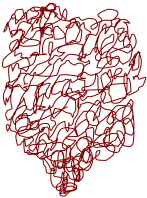
A quartz Gabbro
- Location: Carrock Fell Cumbria
- Colours : white , Green and Black
- 30% White Less then 4 mm grain size
- 40% Green Less then 3 mm grain size
- 30% Black Less then 2 mm grain size.

Examination
- The glass crystal in the rock has some prolong axis.
- The surface minerals is rough and jagged.
- There is no sign of weathering on the mineral.
- The mineral is harder than steel. This mineral is Quartz. Quartz is a very common mineral which is very resistant to weathering. Quartz is made up of only two elements ; silicon and oxygen which are tightly bound together, giving the mineral considerable physical strength.
Granite
- Location: Ballachlish Scotland
- Colours : Black , Milky White and Grey
- 40% Black Less then 3 mm grain size
- 50% Milky White less then 4 mm grain size
- 40% Grey Less then 2 mm grain size
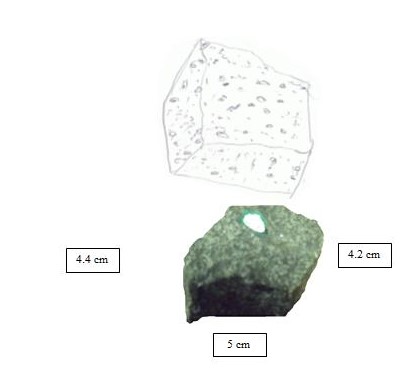
Examination
- The black crystals has irregular surface.
- There is no straight line on the surface layers of the mineral.
The black mineral is either a form of MICA or HORNBLENDE has a deep greenish hue and often displays a characteristic 120 degree angle of cleavage which enables it to be distinguished from the dark micas.
The iron pyrites is the mineral that is mistaken for real gold. Frequently this mineral will have weathered producing rusty iron stains. This mineral is popularly known as ‘fool’s gold’. The Crystal in the iron pyrite is 6 -6.5 hard and 6.1 heavier than ordinary mineral.
The typical iron pyrite is granite. All granites form as a large mass of molten rock slowly cools deep beneath the earth’s surface. (In geology molten rock is usually referred to by the term magma). Silicate minerals crystallise out of the magma as it cools forming a mass of crystals which interlock in three dimensions. Silicate minerals form almost all of the material which is present in a granite rock.
The sample of rock comes from Shap Fell in Cumbria and is known as Shap Granite. Shap granite used widely for ornamental stonework on banks and important buildings and was also used for setts and kerb stones.
As there are many important non-silicate minerals the final exercise is to examine the mineral calcite. Calcite is a very important mineral and makes up the bulk of rocks such as chalk and limestone.
The cleavage rhomb of calcite and the other a typical fragment of limestone rock are both made of the same material–, namely calcite. (Geologists use the term calcite for one crystalline form of the material the chemist calls CaCC>3 or calcium carbonate).
The cleavage rhomb and the angle facing the mineral is approximately 80 degree.
The density of the mineral is calculated as : D = M/V. Thus the density of the mineral is as follows :
119.98 /100. Which is equal to 1.19gm. Thus, the density of the mineral is 1.19gm
The mineral is harder than steel.
The calcite is a mineral that is made up of marble and limestone. The mineral formation of calcite is made of cleavage fragment. It crystal formation take a flat shape. The chemical composition of calcite is calcium carbonate (CaCO3). Thus the typical texture of calcite may be coarse or fine in nature. It may also be compact or powdery.
Bibliography
Nationmaster (2007), Encyclopedia: Granite. Web.